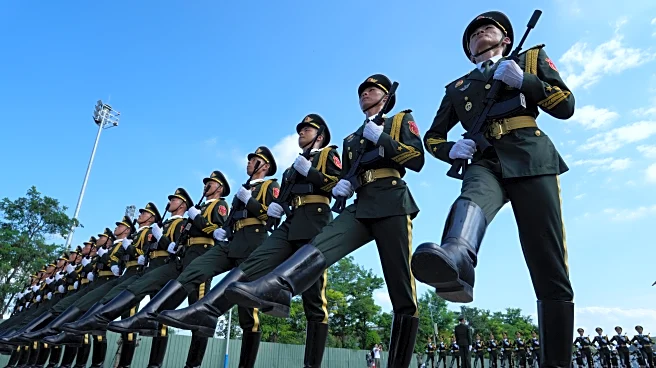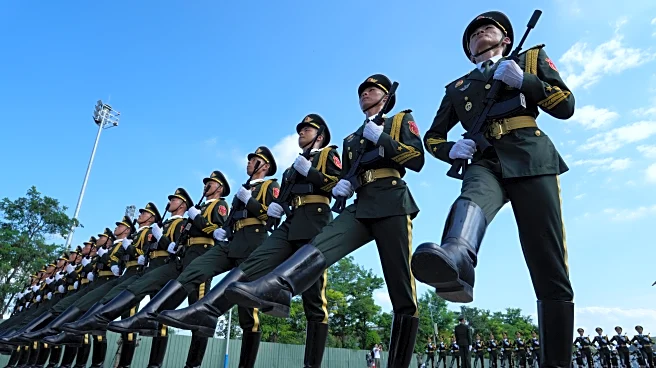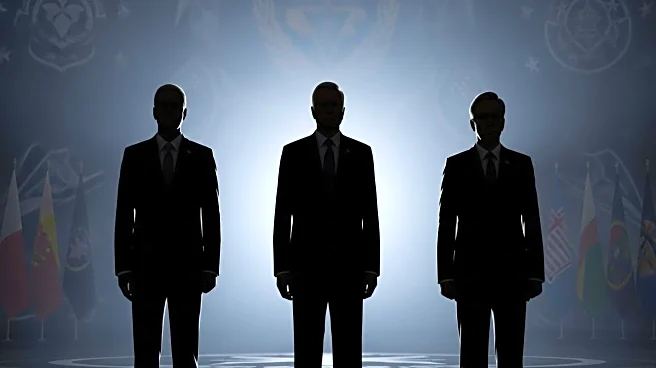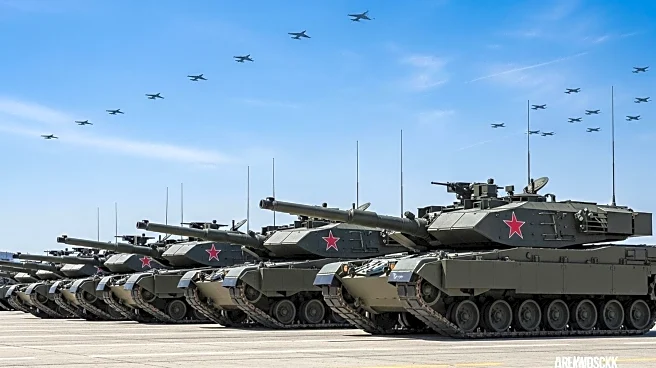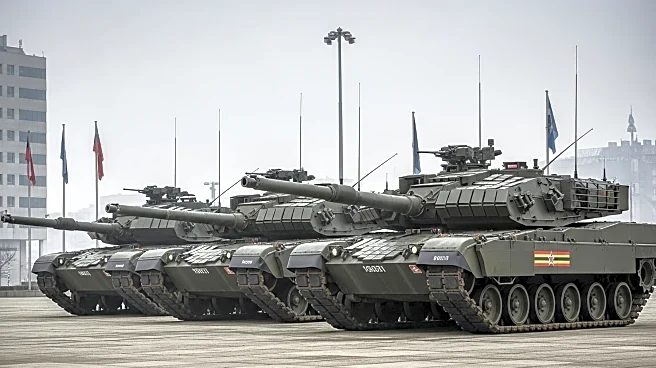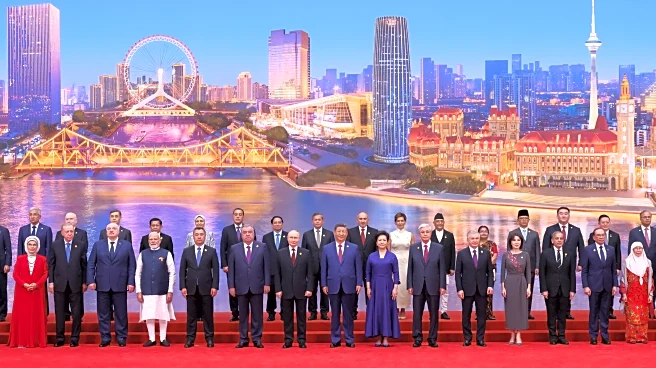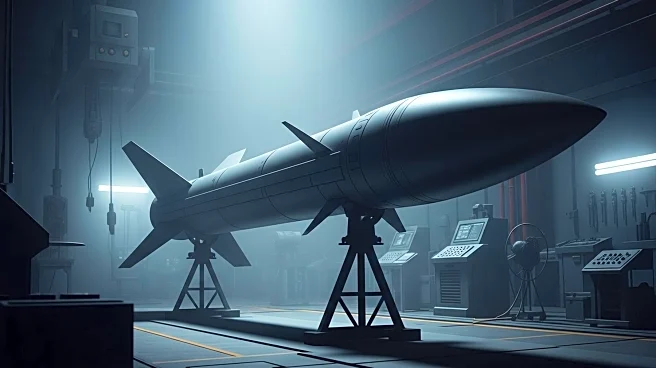What's Happening?
China is set to showcase its military capabilities in a major parade in Beijing, marking the 80th anniversary of Japan's World War II surrender. The event will feature a range of military hardware, including missiles, fighter jets, and drones, some of which will be publicly displayed for the first time. President Xi Jinping will oversee the parade, which aims to demonstrate China's military strength and instill national pride. The parade will be attended by approximately two dozen foreign leaders, including North Korean leader Kim Jong Un and Russian President Vladimir Putin. However, leaders from the U.S., Western Europe, Japan, India, and South Korea are notably absent.
Why It's Important?
The parade underscores China's growing military capabilities, which have raised concerns among its Asian neighbors and the United States. By showcasing advanced weaponry, China aims to project power and reassure its citizens of its ability to defend against external threats. The presence of leaders from North Korea and Russia highlights China's strategic alliances, which could influence geopolitical dynamics in the region. The absence of Western leaders may reflect ongoing tensions and differing diplomatic priorities.
What's Next?
The parade is expected to be a tightly controlled event, with barriers keeping the public at a distance and commercial buildings along the route closed. The focus will be on the invited guests, with the general public able to view the parade through television broadcasts or livestreams. The event may prompt reactions from international stakeholders, particularly those concerned about China's military expansion and its implications for regional security.
Beyond the Headlines
The parade not only serves as a demonstration of military strength but also as a tool for domestic propaganda, reinforcing the narrative of a strong and unified China. It may also influence China's foreign policy, as the display of military prowess could be used to negotiate or assert its position in international affairs. The event highlights the complex interplay between military power, diplomacy, and national identity.


